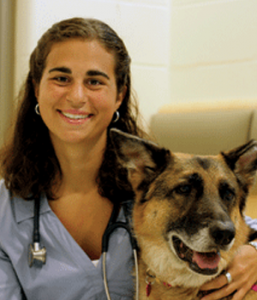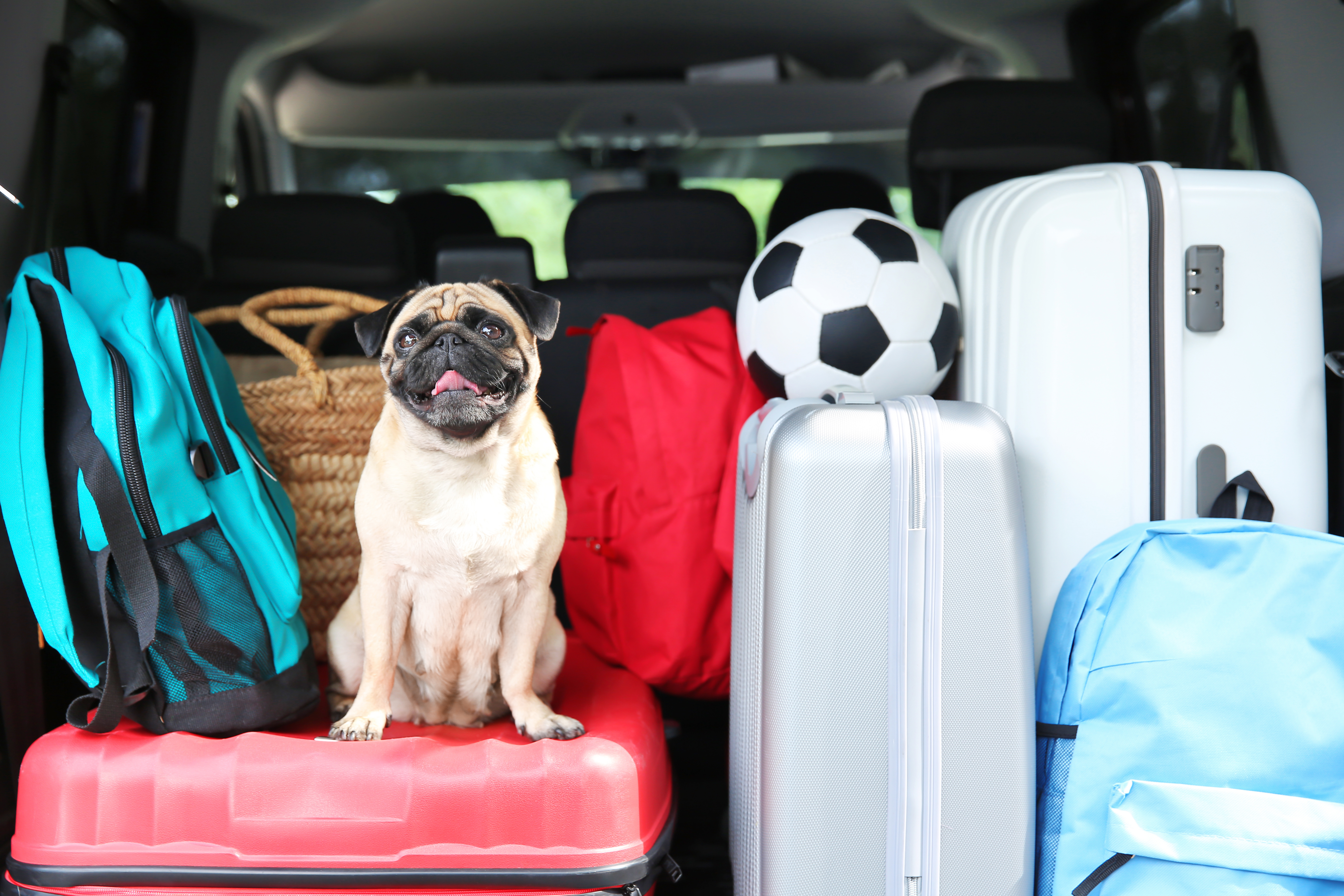-
Adopt
-
Veterinary Care
Services
Client Information
- What to Expect – Angell Boston
- Client Rights and Responsibilities
- Payments / Financial Assistance
- Pharmacy
- Client Policies
- Our Doctors
- Grief Support / Counseling
- Directions and Parking
- Helpful “How-to” Pet Care
Online Payments
Emergency: Boston
Emergency: Waltham
Poison Control Hotline
-
Programs & Resources
- Careers
-
Donate Now
 By Angela Mazza, DVM
By Angela Mazza, DVM
angell.org/generalmedicine
617-522-7282
You got a new job. You want to be closer to family. You just need a fresh start. Whatever the reason, a major move can be exciting but also stressful for you. And if you have a dog as part of your family, you are going to have to take special consideration of its needs when planning and effecting a move. It is best to start the process early and do your research to make things go as smoothly as possible. Some dogs go with the flow, others are creatures of habit, but there are some basic tips that can help your move be a little easier for all involved!
Before the move:
Your dog should be current on all of its vaccinations and preventative care. You should have identification tags in place with your current and new address as well as up to date phone information. A microchip can be placed as another identification tool. If your pet is on medication, you should ensure that you have at least a 30 day supply before moving. If your dog is prone to car sickness, you can speak with your veterinarian about medication that could help alleviate the severity of car sickness. If you are just worried about the overall impact of stress on your dog, have a conversation about the possibility of a mild sedative or anti-anxiety type medications with your veterinarian. Remember, these things need to be done in advance to set yourself and your pet up for success. Avoid calling your vet the day before you move to discuss all of your concerns.
Starting long before a move, you should also be comfortable that your dog has some basic training. It is imperative that your dog come when called and can handle basic sit and stay type commands. If your dog had training years before, a quick refresher course is never a bad idea. If you drop a leash or a door is open by accident and your dog gets a head start away from you, recall is key to preventing a disaster from ensuing. Other easy things to consider are environmental de-stressors. There are several dog appeasing pheromone products that can be used at both your old and your new address that are meant to provide calming and soothing effects on your dog. Keeping a routine and getting exercise can also be de-stressors for a dog. As best you can with all your other responsibilities, try to keep your dog on its schedule of feeding and activity and if you need help, employ day care or dog walkers. Environmental enrichment also will keep your dog’s mind occupied and thereby help with stress. Kong toys filled with food, their favorite toy, a new ball, even a video can all keep a dog distracted and happy.
Have a very specific plan for your dog. If you are traveling by car, make sure you have either a seat belt or a crate to keep your dog as secure as possible. Make sure your dog is acclimated to that device. Sometimes gradual desensitization is necessary if your dog does not like to travel in the car and this needs to be done over time, so start early. If you are traveling by plane or train, make sure you follow the specific guidelines provided by the airline or train service. Often times, a health certificate is required from your veterinarian as well as vaccine paperwork so have a folder with all of your pet’s health records. Sometimes you need to travel first and get things acclimated. If that is the case, you need to ensure your pet is safe with a family member, friend, or a kennel while you are away. If you are able to get to the new house first, you can set up an area for your dog with some of his favorite toys and a bed that he is used to so he feels that he has a safe place to go in the new home.
If you cannot secure your dog with a family member, friend, or in a kennel on the day of the move, make sure movers know there is a dog in the house and consider securing him in a quiet room with a sign that says “Do Not Open.” Leave him with a comfy bed, a Kong toy filled with his favorite food or snack and some water. Do not forget to take him out for walks and some exercise. Before it is time to pack up the car or leave for the airport, you should leave time to take your dog for a long walk. This will allow him to relieve himself, but also the exercise might help tire him out. Once your dog is secure in the car and you are off, plan your route so that you can safely exit your vehicle and offer your dog potty breaks as needed based on your travel time. Be sure your dog is leashed before opening car doors and exiting the vehicle. It is best to have some snacks to offer along the way instead of big meals. You should also bring a water bowl to offer intermittently. If you will be traveling overnight, you will need to secure pet-friendly hotels. Keep the weather in mind too. If you are traveling in the hot summer months, you cannot leave your dog in the car to stop at a restaurant so you either need to pack your own food or use a drive-thru. A lot of these things are common sense, but when your mind is occupied with all the details of a move, it can be easy to forget things so the best advice is just to plan ahead and stick to the plan!
After the move:
If you haven’t already been to the new house, you should prioritize setting up an area for your dog. This will give him a safe space where he can retreat while you are busy setting up the rest of the house. You should walk around your new house and yard and look for any dangers that could befall your dog. A hole in the fence or a loose screen door could lead to a dog on the run before you even get settled. Walk your dog around his new yard on a leash initially until he explores and digests the sights and sounds of his new neighborhood. In the house, make sure valuables, glass objects, any chemicals or medications are put securely away so that your dog doesn’t nose into a box and find something that could be catastrophic. As with before the move, try to keep your dog on a schedule. With the excitement of a move, he may need to go out to the bathroom more often. And lastly, you should have already scoped out the name of an emergency veterinarian and an established general practitioner in the area in case your dog does need emergency veterinary care. Hang these names and numbers on your new fridge for easy access. Hopefully, they are not needed for an emergency, but better to be prepared.
As with all things that are planned, there are always exceptions and bumps in the road but planning ahead of time will lower the risk of something catastrophic from happening and help things go as smoothly as possible. Good luck and happy moving!
